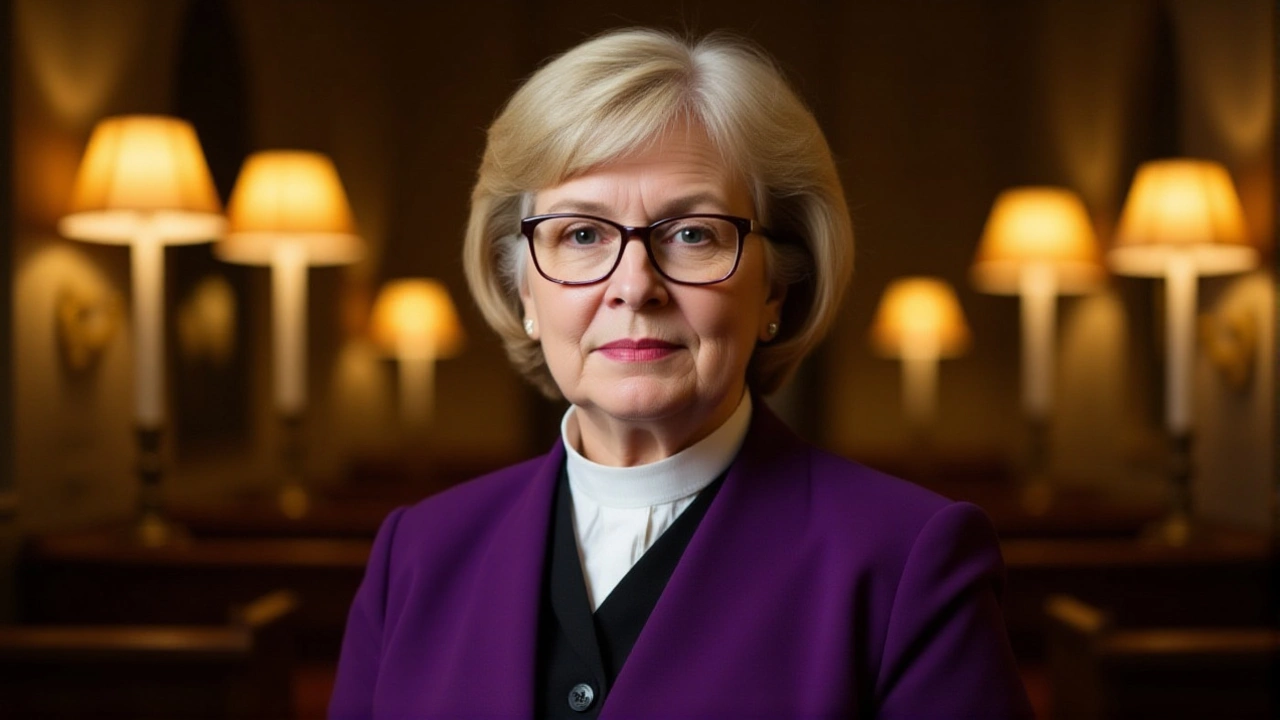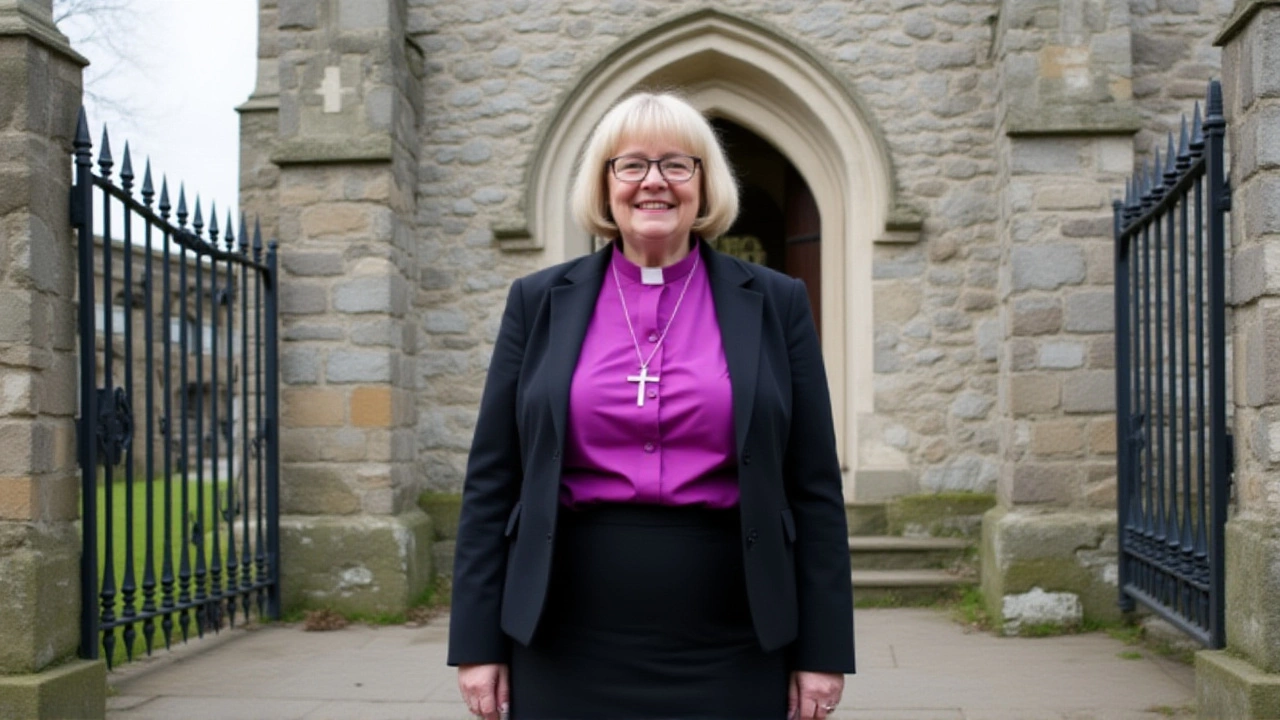Sarah Mullally Becomes First Female Archbishop of Canterbury
 Oct, 4 2025
Oct, 4 2025
When Sarah Mullally, Bishop of London was announced as the new Canterbury Archbishop, the nation felt the weight of a half‑century of tradition shifting beneath its feet.
The statement came from Downing Street on April 17, 2025, marking the first time in nearly 500 years that a woman will sit in the famous chair of the Church of England. The decision, backed by Prime Minister Rishi Sunak’s office, is being hailed as a watershed moment for the Anglican Communion worldwide.
Here’s the thing: Mullally isn’t just a cleric who climbed the ecclesiastical ladder; she’s a former chief nurse for the National Health Service, a career that gave her a front‑row seat to the nation’s health crises and a reputation for decisive leadership. Her appointment could therefore reshape how the church tackles everything from poverty to climate anxiety.
Historical Context: Women in the Anglican Communion
To grasp why this matters, you have to rewind to the early 1990s. In 1992 the Church of England voted to ordain women as priests for the first time—a move that sparked both jubilation and protest across parishes.
Fast forward a decade, and the first female bishops were consecrated in 2015. Yet it was only under Justin Welby, the outgoing Archbishop, that the canonical barriers were finally lifted, allowing women to enter the highest echelons of church governance.
Statistically, female clergy now make up roughly 30% of all ordained ministers in England, and the number of women in senior roles has risen from 5 in 2010 to 22 today. The numbers show a clear trajectory, but the cultural debate is still very much alive.
Sarah Mullally's Unconventional Path
Born in Nairobi in 1962, Mullally trained as a nurse before moving into management. She rose to become chief nurse for the NHS in 2015, overseeing a workforce of over 1 million staff members. During the COVID‑19 pandemic, she was one of the key voices urging swift vaccine roll‑out, a stance that earned her both praise and criticism.
She entered ordained ministry relatively late—ordained as a priest in 2006 at age 44—and within a decade became the first woman to hold the ancient title of Bishop of London. That role made her the third‑most senior figure in the Church of England hierarchy, responsible for a diocese that includes over 600 churches and a population of 9 million people.
"I am humbled and aware of the historic weight of this appointment," Mullally told reporters at the Downing Street briefing. "My hope is to lead with compassion, informed by both pastoral care and practical stewardship."
Reactions Across the Communion
Not everyone is cheering. The Global Anglican Future Conference (GAFCON) released a statement expressing sorrow, warning that the move could deepen existing fractures between traditionalist and progressive provinces.
Conversely, younger Anglican leaders in the United Kingdom and Canada have hailed the appointment as a sign that the church is finally catching up with modern society. Bishop Rose Hudson‑Wright of Durham said, "Mullally's blend of healthcare expertise and spiritual leadership offers a fresh lens for the challenges we face, from mental health to climate justice."
Polling conducted by the Pew Research Center in March 2025 indicates that 54% of Anglicans in England view the appointment positively, while 31% remain uncertain, and 15% are opposed.

Challenges Ahead for the New Archbishop
The Church of England is wrestling with declining attendance—official figures from 2024 show a 12% drop in weekly worshippers since 2017, now hovering around 1.5 million. Moreover, a recent House of Bishops report highlighted rising concerns over youth disengagement, financial strain on parishes, and the need for a robust response to climate change.
Experts suggest that Mullally’s NHS background could be a game‑changer. Dr. Eleanor Finch, a sociologist at the University of Oxford, notes, "Her experience navigating large, bureaucratic institutions may help the church streamline decision‑making and re‑engage with communities that feel abandoned by traditional structures."
Yet she will also have to navigate theological disputes, especially around same‑sex marriage and the role of women in liturgy—issues that have historically split the Communion.
Enthronement and What Comes Next
The formal installation will take place during an enthronement ceremonyCanterbury Cathedral in early 2026. The service is expected to blend traditional liturgy with contemporary music, reflecting Mullally’s known penchant for bridging old and new.
In the weeks leading up to the ceremony, she plans a series of listening tours across England’s deaneries, a gesture meant to signal that she will govern "by the people, for the people," echoing her NHS mantra of patient‑centred care.
What we’ll be watching for is how quickly she can turn symbolic gestures into concrete policy—whether that means funding for mental‑health ministries, tighter climate‑action pledges, or new approaches to inter‑faith dialogue.
- First female Archbishop in 500‑year history.
- Previously chief nurse for the National Health Service.
- Appointment announced on April 17, 2025, by Downing Street.
- Church attendance down 12% since 2017.
- Enthronement slated for January 15, 2026, at Canterbury Cathedral.
Frequently Asked Questions
How does Mullally's appointment affect women clergy in the Anglican Communion?
The historic move validates decades of advocacy for gender equality within the church. It is expected to accelerate the appointment of women to senior roles, especially in provinces where resistance has been strongest.
What are the main criticisms from groups like GAFCON?
Critics argue that appointing a woman undermines traditional biblical interpretations and could widen the rift between conservative and liberal provinces, potentially leading to further schisms.
Why is Mullally's NHS background seen as an asset?
Her experience steering a massive public‑service organization equips her with skills in crisis management, financial oversight, and people‑focused leadership—areas the church struggles with amid declining membership.
When will the enthronement ceremony take place?
The ceremony is scheduled for January 15, 2026, at Canterbury Cathedral, featuring a mix of traditional Anglican rites and modern musical elements.
What challenges does the new Archbishop face immediately?
She must address a 12% drop in weekly attendance, navigate theological disputes over gender and sexuality, and steer the church toward a proactive stance on climate and social justice.